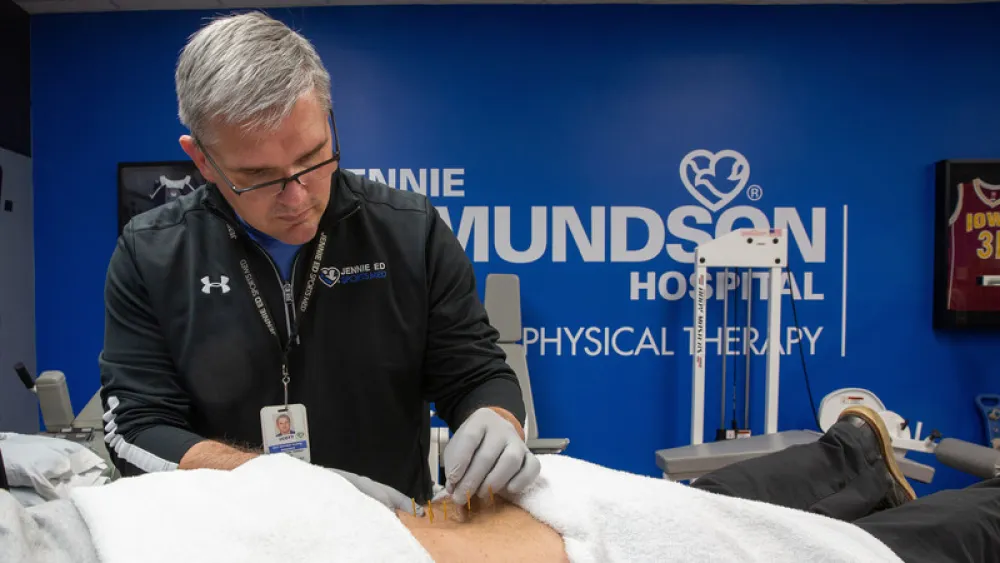




Today's Medicine
Dry Needling Has a Point
Published: Feb. 10, 2020

What Is Dry Needling?
Dry needling is a procedure that treats muscular pain by targeting trigger points – muscle “knots” that are the result of injuries, strains or trauma.
In dry needling, a practitioner inserts thin, short, stainless steel needles, known as filiform needles, into various trigger points to release the knots and relieve muscle pain and spasms. Dry needling is “dry” because the needles don’t inject any fluid into the body.
Dry Needling Isn’t Acupuncture
At first glance, dry needling looks a lot like acupuncture. But acupuncture is a thousands-year-old practice based on ancient Chinese medicine. Practitioners aim to improve energy flow – or Chi – by following the body’s meridian lines in order to relieve symptoms like muscle pain, nausea, migraines, menstrual cramping and depression.
Dry needling is rooted in Western medicine, is practiced by physical therapists and focuses on trigger points rather than energy flow.
Benefits of Dry Needling
Dry needling is most effective when used as part of a broader treatment plan – for example, adding dry needling to a stretching and strengthening program. The combination can decrease the likelihood of symptom recurrence. Dry needling can be effective in treating:
- Headaches and migraines
- Disk problems
- Back, shoulder, neck, knee and hip pain
- Sports injuries
- Carpal tunnel syndrome
- Spinal problems
- Fibromyalgia
Dry Needling Side Effects
Dry needling is relatively safe, and side effects have been minor. They may include:
- Bruising
- Mild bleeding at insertion site
- Soreness
- Fainting
- Fatigue
As with all treatments, dry needling isn’t for everyone. People on blood thinners or those who’ve recently had surgery should consult their primary care providers before exploring treatment. Those who should avoid dry needling include:
- Pregnant women
- People who are afraid of needles
- People who are unable to understand the treatment or can’t give consent
- People who can’t communicate with the practitioner – either directly or through an interpreter
To the Point
Anyone experiencing neuromusculoskeletal pain – including neck, back and extremity pain – as well as headache-related symptoms may benefit from dry needling. Research and results have been promising. And dry needling is entering into the mainstream as more and more consumers seek natural methods of pain relief.
Make sure to check with your insurance provider to see what’s covered, and always consult your primary care provider if you have more questions.
More Resources
- Learn more about Methodist's physical therapy services.
- Read how pet therapy can assist with physical therapy.
- Try these 5 simple exercises for a great pool workout.


